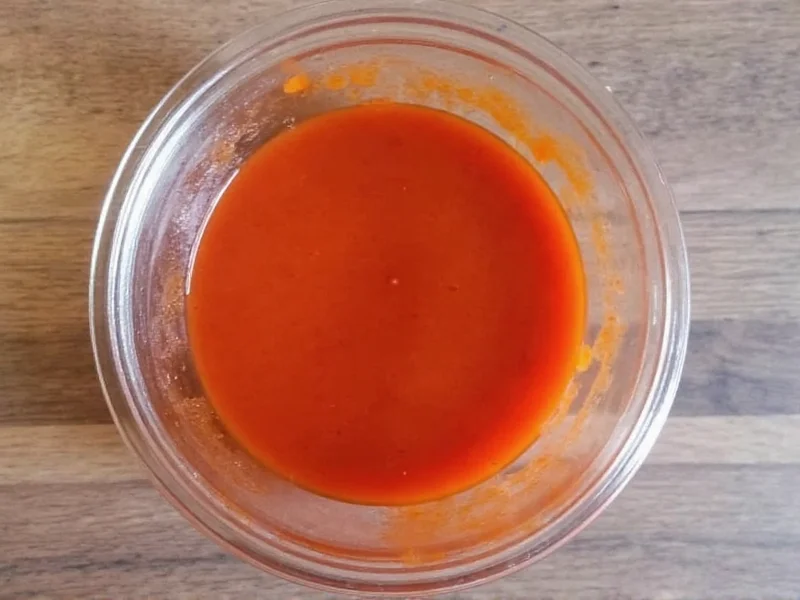Understanding proper storage for sweet chili sauce is crucial for both food safety and maintaining optimal flavor. This popular condiment combines vinegar, sugar, chilies, and garlic—ingredients that create a preservation-friendly environment, but not indefinitely. While the high acidity and sugar content provide some natural protection against bacteria, opened bottles require refrigeration to stay fresh and safe for consumption.
The Science Behind Sweet Chili Sauce Preservation
Sweet chili sauce's shelf stability comes from its carefully balanced composition. The vinegar content typically creates a pH level below 4.6, which inhibits the growth of dangerous bacteria like Clostridium botulinum. Sugar also acts as a natural preservative by reducing water activity in the product. However, once the seal is broken and the bottle is opened, these protective elements gradually diminish as the sauce is exposed to air and potential contaminants from utensils.
Commercial sweet chili sauces often contain additional preservatives like sodium benzoate or potassium sorbate, which extend shelf life in the pantry before opening. These additives work effectively in sealed containers but become less reliable once the product is exposed to the environment through regular use.
Storage Guidelines: Unopened vs. Opened Bottles
| Condition | Pantry Storage | Refrigerated Storage | Expected Shelf Life |
|---|---|---|---|
| Unopened | ✓ Ideal | ✓ Possible but unnecessary | 12-18 months past production date |
| Opened | ✗ Not recommended | ✓ Essential | 6-9 months |
For unopened bottles, store in a cool, dark pantry away from heat sources and direct sunlight. The consistent temperature of a pantry (typically 68-72°F or 20-22°C) provides ideal conditions for maintaining quality until opening. Once you break the seal, the equation changes dramatically. Refrigeration below 40°F (4°C) significantly slows down both microbial growth and quality degradation processes like flavor changes and separation.
How Long Does Sweet Chili Sauce Last Without Refrigeration?
Many consumers wonder how long does sweet chili sauce last unrefrigerated after opening. The answer depends on several factors including ambient temperature, how frequently the bottle is opened, and whether clean utensils are used. At room temperature:
- 1-2 days: Generally safe but quality begins declining
- 3-7 days: Increasing risk of spoilage, especially in warm environments
- Over 7 days: High risk of mold growth and bacterial contamination
In warmer climates or during summer months, opened sweet chili sauce left unrefrigerated can spoil in as little as 48 hours. The sweet chili sauce storage guidelines from food safety experts consistently recommend refrigeration after opening as the only reliable method to ensure both safety and quality.
Signs Your Sweet Chili Sauce Has Gone Bad
Even with proper refrigeration, sweet chili sauce eventually expires. Watch for these warning signs that indicate your sauce has spoiled:
- Visible mold: Any fuzzy growth, even small spots, means immediate disposal
- Off smell: Sour, fermented, or otherwise unpleasant odors
- Texture changes: Unusual thickening, separation that doesn't mix back
- Color changes: Significant darkening or fading from original color
- Bulging lid: Indicates gas production from microbial activity
When in doubt about signs sweet chili sauce has gone bad, follow the food safety principle: "When you see mold, throw it in the bin." Unlike hard cheeses or firm vegetables, the liquid nature of sauce means contaminants can spread throughout the product even if not visible.
Maximizing Shelf Life: Best Practices
To get the most from your sweet chili sauce, follow these evidence-based storage tips:
- Always use clean utensils when serving to prevent cross-contamination
- Tighten the lid securely after each use to minimize air exposure
- Store in the main compartment of your refrigerator, not the door where temperatures fluctuate
- Consider transferring to a smaller container when the bottle is half empty to reduce air space
- Check expiration dates regularly and practice "first in, first out" rotation
For those wondering can you leave sweet chili sauce out overnight, the answer is generally no for opened bottles. While a single night might not cause immediate spoilage, it accelerates quality degradation and increases food safety risks, especially in warmer environments. Always return opened sauce to refrigeration promptly after use.
Special Considerations for Homemade Sweet Chili Sauce
If you've made sweet chili sauce at home without preservatives, refrigeration becomes even more critical. Homemade versions typically lack the commercial preservatives and precise pH control of store-bought products. Consume homemade sweet chili sauce within 2-3 weeks and always keep it refrigerated—even before opening. The shelf life of opened sweet chili sauce made at home is significantly shorter than commercial varieties due to the absence of stabilizers and preservatives.











 浙公网安备
33010002000092号
浙公网安备
33010002000092号 浙B2-20120091-4
浙B2-20120091-4